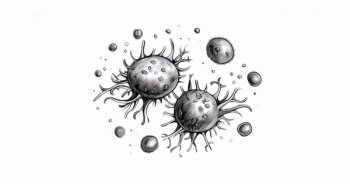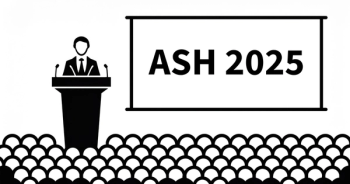
Zeidan Reviews Past Treatment Options for Patient With Lower-Risk MDS
During a Case-Based Roundtable® event, Amer Zeidan, MBBS, discussed how he would have approached a patient with anemia from low-risk myelodysplastic syndrome before the development of newer drugs in the first article of a 2-part series.
CASE SUMMARRY
- A 70-year-old man was diagnosed 1 year ago with lower-risk myelodysplastic syndrome with ring sideroblasts (LR-MDS-RS)
- Multilineage dysplasia
- Moderate anemia (hemoglobin, 11.2 g/dL) and thrombocytosis (platelets, 500,000/μl)
- RS in 4% of nucleated erythroid cells
- SF3B1 mutation negative
- Non-deletion 5q
- No family history of cancer or significant genotoxic agent exposure
- In the last 8 months, he received single-unit packed red blood cell transfusions 3 months apart
- Revised International Prognostic Scoring System: low
- Work-up to assess disease status and response to anemia management:
- Serum erythropoietin (EPO): 250m U/L
- RS negative
- Hemoglobin: 8.3 g/dL
- White blood cell and absolute neutrophil count: within normal limits
- Platelets: 450,000/μl
Targeted Oncology: How would you treat this patient in your clinic prior to recent data?
AMER ZEIDAN, MBBS: If I saw this patient 3 to 4 years ago, or even last year before the COMMANDS trial [NCT03682536], this is someone I would consider for an erythropoietin-stimulating agent [ESA] for multiple reasons. [However], when the EPO level is above 200 U/L, and certainly when it's above 500 U/L, the ESA is much less likely to work. There isn't a specific cutoff; it's a continuum. The higher the EPO level, the less likely to work. Now the literature is different, but I would say most of the literature, if your EPO level is above 200 U/L, the chance of response [is lower].1 There are data with ESA where there was no response,2 which I don't think is [accurate], because I certainly have seen responders.
But from the COMMANDS trial, which used ESA as a control arm and the response rate was 7% if your EPO level was above 200 U/L.3 It certainly does not work in all the patients. But in the absence before we had luspatercept-aamt [Reblozyl] and imetelstat [Rytelo], what was your other option? You either kept the patient going on transfusions or you gave the patient hypomethylating agents [HMAs]. I am not going to give the patient an HMA as a first-line treatment if they have LR-MDS.
My approach in the past...I would have tried an ESA, and the chance of response [would be] 10% to 15%. If the patient didn’t respond after 3 or 4 months, then I would try something else. This has been my approach [until] the COMMANDS trial. There were some data with epoetin-α; this trial [EPOANE3021] is from Europe.4 In Europe, they cannot use drugs until they have randomized phase 3 trials. This trial was only published in 2018, but we've been using ESAs for probably 3 decades for MDS in the United States. It delays the time to transfusions.... For darbepoetin-α, the improvement over placebo was around one-third.2 So generally, around 30% to 40% will respond to ESA when they are anemic with LR-MDS. [With the older and] the newer drugs, [those with] the higher EPO level, above 200 U/L, none of those patients responded. But in reality, I would say it's probably 10% to 15%. It's not 0%.








































